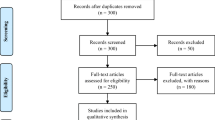Abstract
Objective
To investigate the association between exposure to ethylene oxide during pregnancy and adverse reproductive outcomes.
Methods
Singleton pregnancies were analysed that: (1) had occurred in women working at the time of the study (2004) in hospital sterilising units using ethylene oxide in Gauteng province, South Africa; (2) was the last recognised pregnancy of these women after the 1 January 1992; and (3) this last recorded pregnancy had occurred while the mother was employed. An adverse reproductive outcome was defined as the occurrence of a spontaneous abortion, still birth or pregnancy loss (combined abortion + still birth). Information on the evolution and outcome of the pregnancy was gathered from the mother using a questionnaire. Information on exposure to ethylene oxide during pregnancy was obtained from three sources, namely walk-through surveys, questionnaire-collected data and measurements of the levels of ethylene oxide in sterilising units at the time of the study (personal and static sampling).
Results
The study enrolled 69% of the hospitals in Gauteng using ethylene oxide to sterilise medical equipment. The participation rate for women employed in these sterilising units was 97%, and the study population consisted of 98 singleton pregnancies. Measurements of ethylene oxide showed that operators of sterilisers were still potentially over-exposed. There was a significantly increased risk of spontaneous abortion (POR = 20.8, 95% CI = 2.1–199) and pregnancy loss (POR = 8.6, 95% CI = 1.8–43.7) for pregnancies highly exposed to ethylene oxide compared to low exposed pregnancies. No associations were found between exposure to ethylene oxide and stillbirth.
Conclusions
An increased risk of spontaneous abortion and pregnancy loss was found to be associated with exposure to ethylene oxide during pregnancy.
Similar content being viewed by others
References
Axelsson G, Rylander R (1984) Validation of questionnaire reported miscarriage, malformation and birth weight. Int J Epidemiol1 3(1):94–98
Deschamps D, Leport M, Laurent AM, et al (1990) Toxicity of ethylene oxide on the lens and on the leukocytes: an epidemiological study in hospital sterilisation installations. Br J Ind Med 47:308–313
Hardin BD, Niemeier RW, Sikov MR, et al (1983) Reproductive-toxicological assessment of the epoxides ethylene oxide, propylene oxide, butylene oxide and styrene oxide. Scand J Work Environ Health 9:94–102
Hemminki K, Mutanen P, Saloniemi I, et al (1982) Spontaneous abortion in hospital staff engaged in sterilising instruments with chemical agents. BMJ 285:1461–1463
Hemminki K, Kyyrönen P, Lindbohm M-L (1985) Spontaneous abortion and malformations in the offspring of nurses exposed to anaesthetic gases, cytostatic drugs and other potential hazards in hospitals, based on registered information of outcome. J Epidemiol Community Health 39:141–147
Högstedt C, Rohlen O, Berndtsson BS, et al (1979) A cohort study of mortality and cancer incidence in ethylene oxide production workers. Br J Ind Med 36:276–80
International Programme on Chemical Safety (IPCS) (1985) Environmental Health Criteria 55: Ethylene oxide. World Health Organisation
International Agency for Research on Cancer (1994) Ethylene oxide. In: Monographs on the evaluation of carcinogenic risks to humans, vol 60. Some industrial chemicals, Lyon, pp73–160
LaMontagne AD, Kelsey KT (1998) Ethylene oxide. In: Rom WN (ed) Environmental and occupational medicine, 3rd ed. Lippincott-Raven Publishers, PA, USA, pp 1145–1155
Landrigan PJ, Meinhardt TJ, Gordon J, et al (1984) Ethylene oxide: an overview of toxicologic and epidemiologic research. Am J Ind Med 6:103–115
NIOSH Manual of Analytical Methods. 4th edn. (1994) http://www.cdc.gov/hiosh/nmam
Occupational Safety and Health Administration (OSHA)(2005). Occupational safety and health standards 1910.1047. Substance safety data sheet for ethylene oxide. http://www.osha.gov
Olsen J, Skov T (1993) Design options and methodological fallacies in the studies of reproductive failures. Environ Health Perspect 101(Suppl 2):145–152
Rowland AS, Baird DD, Shore DL, et al (1996) Ethylene oxide exposure may increase the risk of spontaneous abortion, preterm birth and postterm birth. Epidemiology 7(4):363–368
Schulte PA, Walker JT, Boeniger MF, et al (1995) Molecular, cytogenetic and haematologic effects of ethylene oxide on female hospital workers. J Occup Environ Med 37(3):313–320
Sheikh K (1984) Adverse Health Effects of Ethylene oxide and occupational exposure limits. Am J Ind Med 6:117–127
Sobaszek A, Hache JC, Frimat P, et al (1999) Working conditions and health effects of ethylene oxide exposure at hospital sterilisation sites. J Occup Environ Med 41(6):492–499
Verraes S, Michel O (1995) Occupational asthma induced by ethylene oxide. Lancet 346:1434–1435
Weinberg CR, Wilcox AJ (1998) Reproductive epidemiology. In: Rothman KJ, Greenland S (eds) Modern epidemiology, 2nd edn. Lippincott-Raven Publishers, PA, USA
Acknowledgments
We thank Hlosi Ntsuba who assisted in the collection and analysis of ethylene oxide specimens and the Gauteng province’s Department of Health for supporting the project. The study reported here is part of a Ph.D. awarded by the University of the Witwatersrand, Johannesburg, South Africa.
Author information
Authors and Affiliations
Corresponding author
Rights and permissions
About this article
Cite this article
Gresie-Brusin, D.F., Kielkowski, D., Baker, A. et al. Occupational exposure to ethylene oxide during pregnancy and association with adverse reproductive outcomes. Int Arch Occup Environ Health 80, 559–565 (2007). https://doi.org/10.1007/s00420-006-0163-y
Received:
Accepted:
Published:
Issue Date:
DOI: https://doi.org/10.1007/s00420-006-0163-y




